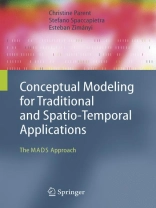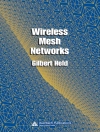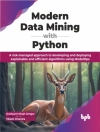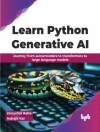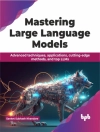From environmental management to land planning and geo-marketing, the number of application domains that may greatly benefit from using data enriched with spatio-temporal features is expanding very rapidly. Unfortunately, development of new spatio-temporal applications is hampered by the lack of conceptual design methods suited to cope with the additional complexity of spatio-temporal data. This complexity is obviously due to the particular semantics of space and time, but also to the need for multiple representations of the same reality to address the diversity of requirements from highly heterogeneous user communities. Conceptual design methods are also needed to facilitate the exchange and reuse of existing data sets, a must in geographical data management due to the high collection costs of the data. Yet, current practice in areas like geographical information systems or moving objects databases does not include conceptual design methods very well, if at all.
This book shows that a conceptual design approach for spatio-temporal databases is both feasible and easy to apprehend. While providing a firm basis through extensive discussion of traditional data modeling concepts, the major focus of the book is on modeling spatial and temporal information. Parent, Spaccapietra and Zimányi provide a detailed and comprehensive description of an approach that fills the gap between application conceptual requirements and system capabilities, covering both data modeling and data manipulation features. The ideas presented summarize several years of research on the characteristics and description of space, time, and perception. In addition to the authors’ own data modeling approach, MADS (Modeling of Application Data with Spatio-temporal features), the book also surveys alternative data models and approaches (from industry and academia) that target support of spatio-temporal modeling.
The reader will acquire intimate knowledge of both thetraditional and innovative features that form a consistent data modeling approach. Visual notations and examples are employed extensively to illustrate the use of the various constructs. Therefore, this book is of major importance and interest to advanced professionals, researchers, and graduate or post-graduate students in the areas of spatio-temporal databases and geographical information systems.
‘For anyone thinking of doing research in this field, or who is developing a system based on spatio-temporal data, this text is essential reading.’ (Mike Worboys, U Maine, Orono, ME, USA)
‘The high-level semantic model presented and validated in this book provides essential guidance to researchers and implementers when improving the capabilities of data systems to serve the actual needs of applications and their users in the temporal and spatial domains that are so prevalent today.’ (Gio Wiederhold, Stanford U, CA, USA)
Table des matières
The MADS Data Model.- The Risks Management Application.- MADS Data Types.- The MADS Query and Manipulation Languages.- From Conceptual Design to Logical Design.- Related Works.- Conclusion.
A propos de l’auteur
Christine Parent is a full professor, at the Computer Science Department, University of Burgundy at Dijon, France. She is part-time professor at HEC INFORGE of the University of Lausanne. She got her Ph.D. from the University of Paris VI, in 1987. She has been teaching and researching in data management systems since 1970. She authored many papers in well-known journals and conferences on the development of an extended entity-relationship approach, on schema integration methodologies and spatio-temporal database modeling. She gave several tutorials on these topics and served on many program committees of international conferences. Her current research interests include a cooperative design methodology relying on the integration of existing heterogeneous databases, modeling of spatio-temporal databases, and ontologies.
Stefano Spaccapietra is a full professor at the Ecole Polytechnique Fédérale de Lausanne, Switzerland, where he heads the database laboratory. He has been in an academic position all along his career. He got his Ph D from the university of Paris VI, in 1978, where he first had his master in computer science in 1969. He moved to the university of Burgundy, Dijon, in 1983 to occupy a professor position at the Institute of Technology. He left Dijon for EPFL in 1988. His current research interests include conceptual modelling, visual user interfaces, ontologies and location-based services.
Esteban Zimányi is a Professor of Computer Science at the Engineering Department of the Université Libre de Bruxelles (ULB), Belgium. He started his studies at the Universidad Autónoma de Centro América, Costa Rica. He received the BSc degree and the doctorate degree in computer science from the Faculté des Sciences at the ULB. During 1997, he was a visiting researcher at the Database Laboratory of the Swiss Federal Institute of Technology in Lausanne, Switzerland. His current research interests include conceptual modelling, semantic web, bio-informatics, geographic information systems, and temporal databases.
